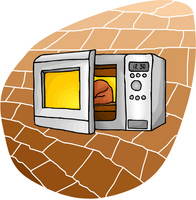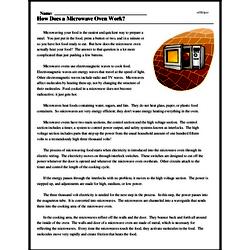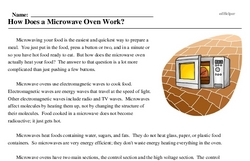How Does a Microwave Oven Work?
Microwaving your food is the easiest and quickest way to prepare a meal. You just put in the food, press a button or two, and in a minute or so you have hot food ready to eat. But how does the microwave oven actually heat your food? The answer to that question is a lot more complicated than just pushing a few buttons.
Microwave ovens use electromagnetic waves to cook food. Electromagnetic waves are energy waves that travel at the speed of light. Other electromagnetic waves include radio and TV waves. Microwaves affect molecules by heating them up, not by changing the structure of their molecules. Food cooked in a microwave does not become radioactive; it just gets hot.
Microwaves heat foods containing water, sugars, and fats. They do not heat glass, paper, or plastic food containers. So microwaves are very energy efficient; they don't waste energy heating everything in the oven.
Microwave ovens have two main sections, the control section and the high voltage section. The control section includes a timer, a system to control power output, and safety systems known as interlocks. The high voltage section includes parts that step up the power from the usual household amount of one hundred fifteen volts to a tremendously high three thousand volts!
The process of microwaving food starts when electricity is introduced into the microwave oven through its electric wiring. The electricity moves on through interlock switches. These switches are designed to cut off the power whenever the door is opened and whenever the microwave oven overheats. Other circuits attach to the timer and control the length of the cooking cycle.




